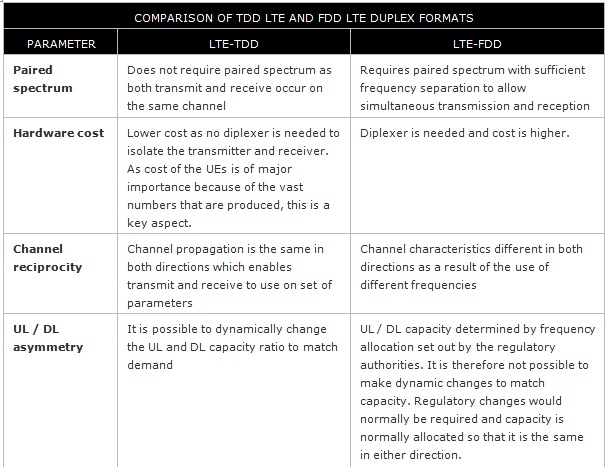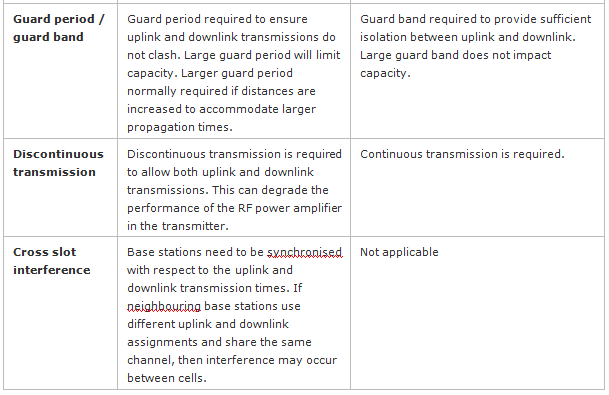The two versions of LTE are very similar. In fact, they differ only in the physical layer and, as a result, the version implemented is transparent to the higher layers. This means that UE will be able to support both TD-LTE and FDD-LTE with one chipset with only minor modifications required. UE based on those chipsets are (or will soon be) available from Sony Ericsson, Huawei, Samsung, Nokia, and others.


The following features are unique to TD-LTE:
1. Frame structure – 3GPP has specified a special subframe that allows switching between downlink and uplink transmission.
2. Random access – Several additional random access formats exist
in certain subframes. Also, several random access channels exist in
every subframe.
3. Scheduling – The scheduling for the uplink is multi-frame.
4. HARQ – The number of HARQ processes depends on the uplink/downlink resource allocation.
5. ACK/NACK – Multiple acknowledgements and negative acknowledgements are combined on the uplink control channels.This ultimately leads to increased control signaling and lower spectrum/resource utilization.
6. Guard periods – These are used in the center of special subframes. They allow for the advance of the uplink transmission timing.
Another difference between FDD-LTE and TD-LTE is that in FDD-LTE every downlink subframe can be associated with an uplink subframe. In TD-LTE the number of downlink and uplink subframes is different and such association is not possible.
In terms of spectrum efficiency, the performances of TD-LTE and FDD-LTE are similar for non-delay sensitive traffic. The lower performance of TD-LTE is due to the guard periods mentioned above.
Finally, TD-LTE and TD-SCDMA work together with minimum interference issues, even if both technologies are deployed in the same frequency band (assuming that the TD-LTE UL:DL configurations are chosen correctly and both systems are synchronized to the same time source).
